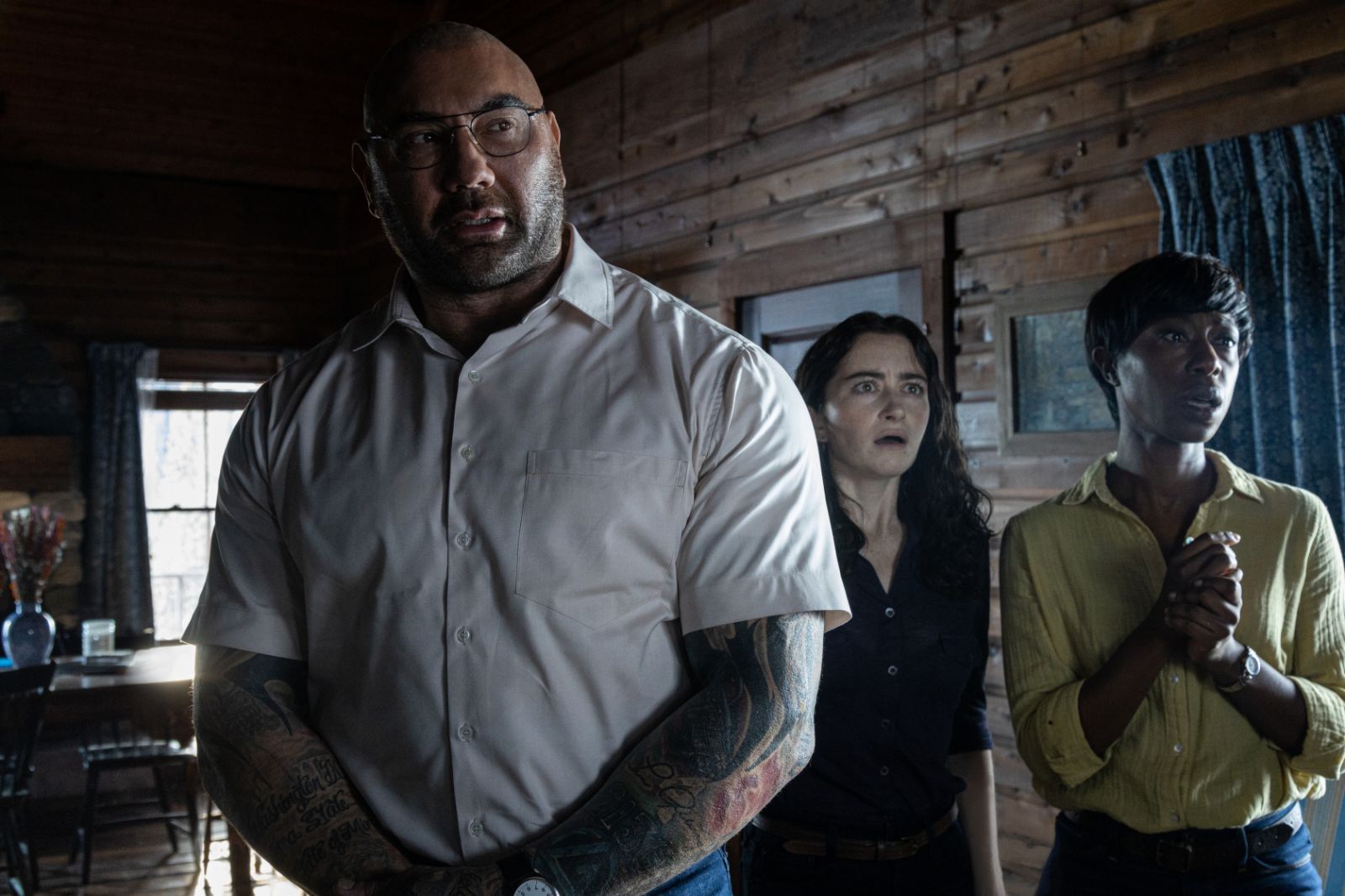Though adapting Paul G. Tremblay’s The Cabin at the End of the World, M. Night Shyamalan’s newest film takes a different approach. Knock at the Cabin is an exercise in specified tension and single-setting thrills. It zips and zooms, looking as gorgeous as anything in the director’s filmography, even featuring one of the best performances he’s pulled out of an actor with Dave Bautista doing some tremendous work. Yet the emotional connection fades as terror grows, a fun time at the movies not being able to overcome a severe lack of attachment to characters who must die in order for everyone else to survive.
Knock at the Cabin begins with Leonard (Bautista) approaching Wen (Kristen Cui, in a solid child performance) to catch grasshoppers with her. He talks in coded language, and once she’s sufficiently worried, the young girl runs back inside to her two dads, Eric and Andrew, played by a subdued Jonathan Groff and an outbursting Ben Aldridge, respectively. The former breathes in subtlety, the latter becomes almost a caricature of anger by the thriller’s end. Aldridge is over-the-top and his emotions become cartoonish, even if they’re rooted in a heavy reality for many queer parents.
Leonard visits the family, along with his associates Sabrina (Nikki Amuka-Bird), Adriane (Abby Quinn), and Redmond (Rupert Grint), all of whom believe the world is about to end. The dads and Wen must decide to sacrifice one of the three of them to save the incoming apocalypse, and the story races onward. Shyamalan throws in flashbacks to show moments of joy and difficulty in Eric and Andrew’s relationship, including the lengths they go in order to feel accepted. These flashbacks put a pause on the story at hand, losing necessary momentum as the director tries to build towards finality. As character background, Shyamalan understands the otherness that they feel in their daily lives, including the choices they make to circumvent those that don’t welcome them. They have the same right to be happy, in love, and raising a child as anyone else.
Shot by Robert Eggers regular Jarin Blaschke, Knock features some of Shyamalan’s most inspired camera choices, and the landscape always seems to be shifting inside this quite small cabin. There’s a reason for the camera to pan and rotate. It continues this sense of dread that Shyamalan is cultivating, pushing the film’s horror elements. Using constant close-ups, Blaschke’s cinematography is invasive and private, well-suited for Shyamalan’s direction. He remains endlessly inventive over 25 years after his first feature and–for what it’s worth–the director’s cameo is also his best in years.
Bautista leads the cast with a gentle gravitas. There’s an understanding he can be violent if he wishes, and every time he chooses patience it works wonders. He speaks slowly, assuredly, and with great understanding. The wrestler-turned-actor is this film’s strongest asset, his emotion seeping into every line reading as the death toll rises around him. It’s a great audition for Bautista to receive more dramatic opportunities to showcase his talent beyond physicality.
Yet, once again, Shyamalan’s script fails him. He knows his standing as the master of twists, and he does so again here, subverting the audience’s expectation into an extra layer of thrills. But his characters aren’t realized–they are solely focused on advancing the plot, something Shyamalan has struggled avoiding in his last few films. If he gets credit for understanding his reputation and using that to great effect, Knock at the Cabin still registers as hollow. Its politics, well-meaning as they may be, aren’t completely investigated. More than just misunderstood, his characters are underwritten and underserved. Thus the expected emotion never arrives. The gut punch never comes, even as music swells. All of this fear fizzles; message, story, and figures become transient. It starts with so much promise, only to end as a letdown–like waiting for the end of the world only for the storm to pass.
Knock at the Cabin will be released on February 3.

